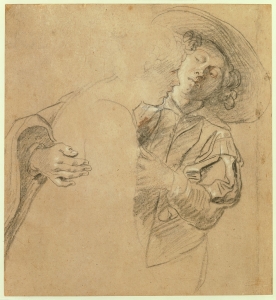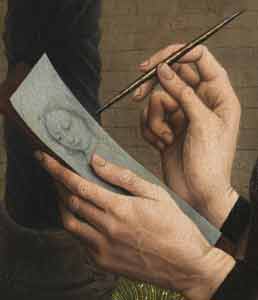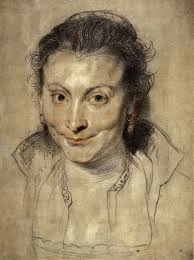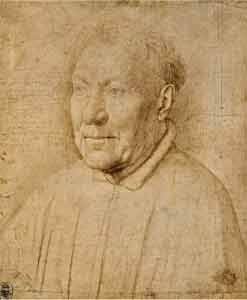Drawing techniques of Old Masters
One of the most important effects of the quality of suppleness and pliability possessed by all the great pointing mediums from  to Rubens was the freedom they allowed the artist in his drawing. Unhindered by the difficulties of working with an inadequate medium, his brush could flow as his mind and eye and knowledge directed. Without the distractions that are always caused by any technical limitations, he was free to give his entire attention to the expression of his ideas and the exercise of his abilities. The supreme examples of this ease of execution are to be seen in the great masters of the sixteenth and seventeenth centuries, when the understanding of the human form together with the skill to express it, reached their highest development fit the same time that the technical means for such expression had been perfected.
to Rubens was the freedom they allowed the artist in his drawing. Unhindered by the difficulties of working with an inadequate medium, his brush could flow as his mind and eye and knowledge directed. Without the distractions that are always caused by any technical limitations, he was free to give his entire attention to the expression of his ideas and the exercise of his abilities. The supreme examples of this ease of execution are to be seen in the great masters of the sixteenth and seventeenth centuries, when the understanding of the human form together with the skill to express it, reached their highest development fit the same time that the technical means for such expression had been perfected.
It might be of value to examine briefly certain aspects of the subject of drawing, especially those relating to the natural facts with which drawing, as an art, has to deal. For in order to master this art, the draughtsman must be possessed not only of skill, coupled with a sound knowledge, but he must also have an understanding of what drawing really means.
To begin with, he must take note of some of the elementary principles of the visual aspect of nature:
First, that an object in space presents three dimensions–height, breadth and depth.
Second, that the various properties of an object are modified by its position in space.
Third, that the movement of lines and planes towards a vanishing point constitutes linear perspective.
Fourth, that the gradation of colors and tones or values, in relation to distance, constitutes aerial perspective.
Fifth, that without the lights and shadows which modify its own colors, an object would make no appearance to the eye.
Living beings are characterized by movement and expression, but since the human eye does not have the same capacity for instantaneous registration as objective photography, it is unable to perceive distinctly the successive moments in a movement.
In order to, give the impression of an entire movement, as the eye perceives it, the artist must choose the most characteristic partial positions, even though they may not all belong to the same moment of action. This principle holds good for figure drawing or painting where skilful selection will give the impression of life, while instantaneous representation will only produce a frozen posture.
Take a human face for example. It is animated with eyes and lips which have mobile expression. The way to make this face appear alive on paper, or on canvas, is not to show the features at one given moment in this motion, but to seize the maximum expression of several moments and to put these together intelligibly.
It is not possible for the artist to reproduce his visual impression in its entirety, nor is it his aim to do so. On the contrary he must try to interpret nature by showing the distinguishing characteristics of the forms he sees. Here again he has to make a choice. The leaves of a tree, the hair of a model, the undulations of the ground–these cannot all be exactly repeated. They must be portrayed through selection and simplification. The principal parts must be emphasized and what is incidental must be subordinated or left out. It is by his own selection and interpretation through an expressive style that the artist demonstrates his originality.





This Post Has 0 Comments